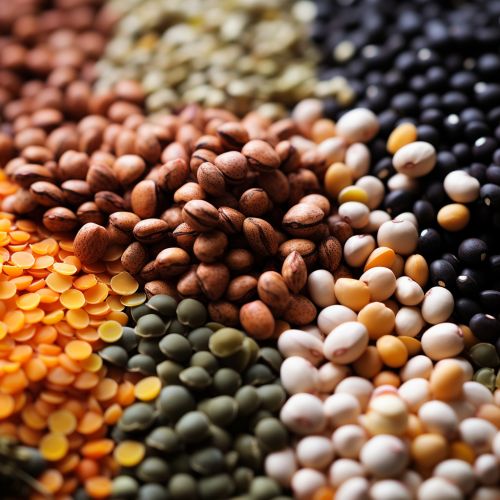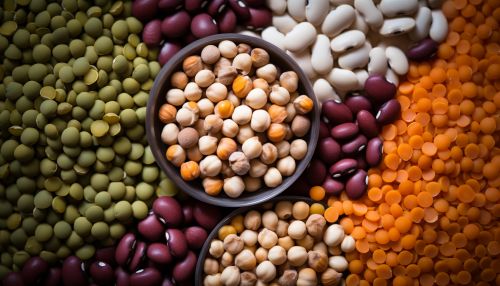Legume
Overview
Legumes are a type of plant in the Fabaceae family, also known as the pea family. They are one of the most significant and diverse families of flowering plants, comprising about 751 genera and nearly 20,000 species. The family is widely distributed, and its members are commonly recognized by their fruit, also known as a legume, and their compound, stipulate leaves.


Taxonomy and Etymology
The term "legume" is derived from the Latin "legumen", which means anything that can be gathered. The family Fabaceae is classified under the order Fabales, which is part of the Rosid I group of dicotyledons. The Fabaceae family is further divided into three subfamilies: Mimosoideae, Caesalpinioideae, and Faboideae.
Morphology
Legumes are characterized by their unique fruit, a legume, which is a simple dry fruit that develops from a simple carpel and usually dehisces (opens along a seam) on two sides. The seeds, or beans, are contained within this fruit. The leaves are usually alternate and compound, with stipules at the base.
Ecology
Legumes have a significant ecological role due to their ability to fix atmospheric nitrogen, an essential nutrient for plant growth. This is achieved through a symbiotic relationship with bacteria known as rhizobia, which reside in nodules on the roots of the legume plants.
Economic Importance
Legumes are of great economic importance due to their high protein content and ability to improve soil fertility. They are a major source of protein in many parts of the world, especially in regions where meat is scarce or expensive. Legumes are also used as fodder for livestock, and some species are grown for timber.
Nutritional Value
Legumes are rich in protein, fiber, and complex carbohydrates. They are also an excellent source of various vitamins and minerals, including iron, potassium, and folate. Due to their high nutritional value, legumes are a key part of a healthy diet and are particularly beneficial for vegetarians and vegans.
Cultivation
Legumes can be grown in a variety of climates and soil types. They are typically grown as annual crops, although some species are perennials. The cultivation of legumes can improve soil fertility by adding nitrogen, which can benefit subsequent crops.
